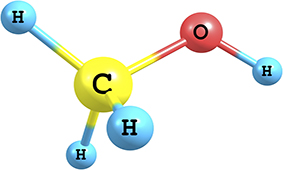
Viewpoint: Europe methanol prices to edge lower in 2020

The European quarterly contract price (CP) for the first quarter of 2020, which is based on negotiations between major buyers and sellers, was fully settled at €270/t ($299.35/t), unchanged from the previous quarter and reflective of rising discount levels and stable spot prices during the fourth quarter of 2019.
The European market was balanced-to-long in the fourth quarter of 2019, when methanol production levels in northwest Europe were steady. But margins tightened as natural gas prices rose seasonally. With European spot prices averaging around €205/t ($227/t) during the fourth quarter of 2019, the economics of running some gas-based methanol units is questionable. In Asia-Pacific, certain production units have begun to shut down as a result of curtailed feedstock, which will likely provide a temporary boost to spot prices.
European supply continues to benefit from regular imports from Trinidad, Venezuela, Equatorial Guinea and Russia, which should maintain European inventory. With new methanol downstream capacity coming online in Russia, producers there will likely cater for the domestic market and reduce exports to northwest Europe until new production projects in the Amur and Volgograd regions come on stream in the coming years.
With at least four new capacity additions in North America scheduled to be commissioned by 2023, excess supply from that region will most likely find its way into Europe, economics permitting. The start-up of Caribbean Gas Chemical's (CGCL) unit in Trinidad — scheduled for the first half of 2020 — will also boost imports from Latin America.
Additional Iranian methanol capacities — from Bushehr and Pars — that are scheduled to come online before the end of 2020 will add further pressure on Chinese spot prices, as product finds its way into Asia-Pacific. Spot prices in China averaged around $219/t during the fourth quarter of 2019, reflective of high coastal stocks in China following strong production and regular imports from the Middle East.
MTO-based olefin production is running near-peak levels and again underpinned year-on-year demand growth for the industry, representing 16pc of total global methanol demand in 2019. This will probably decline significantly in 2020, as global olefin and olefin derivative capacity additions are likely to negatively affect MTO-production economics, thereby reducing methanol consumption into the sector and depressing global methanol spot prices. Although one idled MTO unit will probably come back online in the middle of the first quarter, and new capacity will add to this during the spring-summer period, a decline in MTO-based ethylene in China will add further pressure on methanol unit operating rates as a whole.
By Michael Vitiello


Trump weighs using $2 billion in CHIPS Act funding for critical minerals

Codelco cuts 2025 copper forecast after El Teniente mine collapse

Electra converts debt, launches $30M raise to jumpstart stalled cobalt refinery

Barrick’s Reko Diq in line for $410M ADB backing

Abcourt readies Sleeping Giant mill to pour first gold since 2014

Nevada army depot to serve as base for first US strategic minerals stockpile

SQM boosts lithium supply plans as prices flick higher

Viridis unveils 200Mt initial reserve for Brazil rare earth project

Tailings could meet much of US critical mineral demand – study

Kyrgyzstan kicks off underground gold mining at Kumtor

Kyrgyzstan kicks off underground gold mining at Kumtor

KoBold Metals granted lithium exploration rights in Congo

Freeport Indonesia to wrap up Gresik plant repairs by early September

Energy Fuels soars on Vulcan Elements partnership

Northern Dynasty sticks to proposal in battle to lift Pebble mine veto

Giustra-backed mining firm teams up with informal miners in Colombia

Critical Metals signs agreement to supply rare earth to US government-funded facility

China extends rare earth controls to imported material

Galan Lithium proceeds with $13M financing for Argentina project

Kyrgyzstan kicks off underground gold mining at Kumtor

Freeport Indonesia to wrap up Gresik plant repairs by early September

Energy Fuels soars on Vulcan Elements partnership

Northern Dynasty sticks to proposal in battle to lift Pebble mine veto

Giustra-backed mining firm teams up with informal miners in Colombia

Critical Metals signs agreement to supply rare earth to US government-funded facility

China extends rare earth controls to imported material

Galan Lithium proceeds with $13M financing for Argentina project

Silver price touches $39 as market weighs rate cut outlook

















